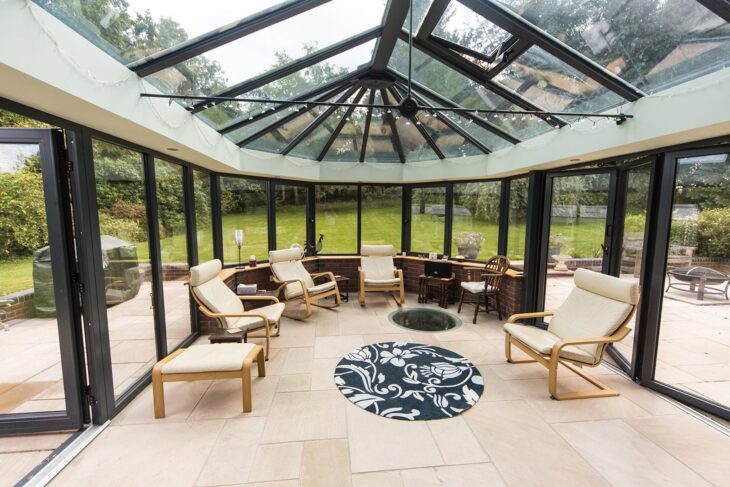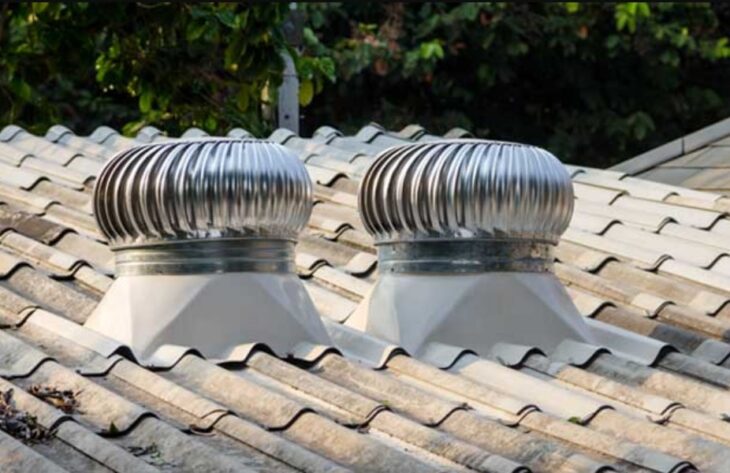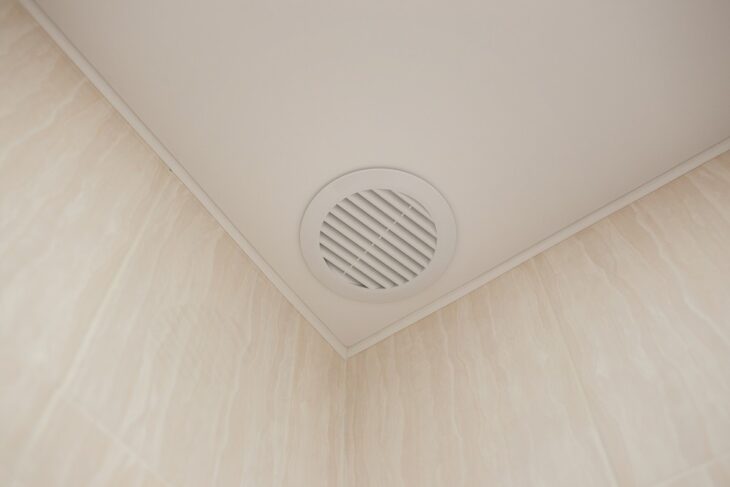A conservatory is a room that is part of the house that shuts out the cold and lets you enjoy the natural light. However, inside, warm moist air mixes with cool dry air, creating damp conditions that can only be remedied by venting your conservatory to the outside. Proper ventilation is essential in every greenhouse; it allows for optimum growth and air circulation.
Without this, your plants (if you have some in there) will suffer and the apex of your greenhouse can become a new home for undesirable bugs (such as red spider mites) which can quickly spread across the house. Ventilating a conservatory can be a tricky process, but it is one which has to be done well. People need fresh air to breathe and so getting it into your conservatory can be immensely beneficial.
The problem is how do you effectively ventilate it to increase comfort?
Contents
Why Does A Conservatory Need To Be Ventilated?

Source: coralwindows.co.uk
Due to the nature of your conservatory, conservatories are not built with functional windows like you have in your home. In fact they are designed to be well insulated from the elements. When you have your thermostat set at a certain temperature, you want it to hold that temperature constant. This is extremely important especially if your summertime temperatures are soaring or in times such as when winter is hitting and temperatures start to drop.
This is why having your conservatory well-insulated is so important. However, this insulation can also be its main downfall. No or poor ventilation can cause a myriad of issues, one of which is damp problems. A poorly ventilated conservatory will lead to harmful damp and mould that can be difficult to eradicate. Moisture or damp problem can happen when cold surfaces in your conservatory interact with warm air in your home.
But as long as it has proper ventilation, warm air doesn’t condense as much on its walls, ceiling, or windows. Ventilation also enhances the quality of air in your conservatory as well as regulating temperature. In the event that warm air is allowed to linger and go stale, the room will not only be unpleasant, but it will also have poor air quality.
If you want your conservatory to be habitable all year-round, it has to be effectively ventilated. This essentially means making sure there are enough entry points for air movement without letting any of the heat out. There are certainly plenty of ways to do this. Below are some tips on how to keep your conservatory well ventilated all year round.
Draw Colder Air Into the Conservatory
The key to conservatory ventilation is drawing cooler air in from outside. This is achieved by arranging the roof to ensure the prevailing wind passes over it before it reaches the walls. By creating an area of high pressure above the roof, the colder air from up draughts into your conservatory.
Install Roof Vents

Source: homereference.net
By installing roof vents on your conservatory, you can reduce the reliance of the room on external heat sources and extend the use of your conservatory year-round. The heat from solar rays entering through your roof is captured by the conservatory roof vent and transferred back into the room via a cool air channel. There are several types of conservatory roof vents.
For example, the ridge vent works by creating a low pressure air flow that allows hot air to naturally escape through the ridge vent and exit the conservatory. By installing ridge vents, you will create cross ventilation, which will help regulate and control the internal temperature of your conservatory more effectively than standard roof vents alone can manage. Its ridge vents are an inexpensive option for the ventilation installation.
Have Some Form of Opening and Closing in the Conservatory Roof Vents
Opening and closing the roof vents is important when you have a glass fronted structure, it allows the heat build up during the day to escape and creates fresh air at night when there are no winds.
Conservatory roof venting is a very complex issue and more often than not it gets down to the choice of personal preference as to which conservatory roof vents you will choose from.
Install Extractor Fans

Source: e-architect.com
Ventilation is one of the most important aspects of greenhouse construction as it takes away heat and moisture. One excellent way to obtain this is by installing extractor fans. The latest technology used in today’s extractor fans includes a timer that turns the fan on and off automatically.
Install extractor fans right in the ceiling when windowfactory.co.nz so that it is there to pull the hot air out and vent it up and away from your home. Ideally, the fan should be rated for at least 145 cubic meters of ventilation per hour. If you have 2 holes, consider a 240 or 500 cubic meters per hour fan that will keep your whole room cool.
Extractor fans remove damp air from your home and help control moisture, which is the prime cause of mould growth.
Install Conservatory Ceiling Fans
Conservatory ceiling fans are the perfect method of ventilating when in the summer months. If there is one room in the house that can get unbearably hot, it’s the conservatory, this is due to the glass doors and windows which allow almost every single ray of sunlight through. Greenhouse ceiling fans look just like any other fan installed in a household.
The difference however is that they’re designed and engineered to be installed high up on the ceiling of your greenhouse. There are various types of conservatory ceiling fans available, so consider your needs before making your purchase. A poorly-ventilated conservatory will feel closed in and uncomfortable due to stagnant air.
Final Thoughts
A conservatory is an ideal room in a home due to its close connection with the outdoors, one which you want to enjoy without compromising on the temperature, so it is important that you manage any temperatures and airflow effectively. Follow these tips when you are choosing your greenhouse roofing in order to make sure that you are getting the most out of this room.
